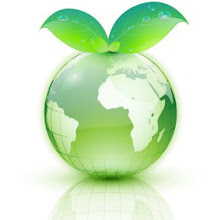
NEWater (Chinese: 新生水) is the brand name given to reclaimed water produced by Singapore's Public Utilities Board. More specifically, it is treated wastewater (sewage) that has been purified using dual-membrane (via microfiltration and reverse osmosis) and ultraviolet technologies, in addition to conventional water treatment processes. The water is potable and is consumed by humans, but is mostly used for industry requiring high purity water.
The Singapore Water Reclamation Study (NEWater Study) was initiated in 1998 as a joint initiative between the Public Utilities Board (PUB) and the Ministry of the Environment and Water Resources (MEWR). The aim of this study was to determine if NEWater was a viable source of raw water for Singapore's needs. NEWater and desalination were explored as means to reduce reliance on water importation.

NEWater is the product from a multiple barrier water reclamation process:
- The first barrier is the conventional wastewater treatment process whereby the used water is treated in the Water Reclamation Plants.
- The second barrier, and first stage of the NEWater production process, uses microfiltration/ ultrafiltration to filter out suspended solids, colloidal particles, disease-causing bacteria, some viruses and protozoan cysts. The filtered water that goes through the membrane contains only dissolved salts and organic molecules.
- The third barrier, and second stage of the NEWater production process, utilizes reverse osmosis (RO). In RO, a semi-permeable membrane filters out undesirable contaminants such as bacteria, viruses, heavy metals, nitrate, chloride, sulphate, disinfection by-products, aromatic hydrocarbons, and pesticides that cannot pass through the membrane. Hence, NEWater is free from viruses and bacteria and contains very low levels of salts and organic matter. At this stage, the water is already of potable quality.
- The fourth barrier, and third stage of the NEWater production process, acts as safety precaution. UV disinfection is used to ensure that all organisms are inactivated and the purity of the product water guaranteed. With the addition of some alkaline chemicals to restore the pH balance, the NEWater is ready for use.

Planned IPU as a source of water supply is not new. It has been practiced in several parts of the United States for more than 20 years. At Water Factory 21, Orange County Water District, Southern California, high quality water reclaimed from treated used water has been injected into ground water since 1976. Water reclamation is a growing trend in the U.S. and around the world. In the U.S., there are several other water reclamation projects that are now being planned or under construction. In fact, many cities along major rivers in the world like River Rhine, Mississippi River, Yangtze River and Mekong River have also been practicing unplanned indirect portable use of reclaimed water, with upstream water users discharging treated used water into a water source that serves as a water supply for a downstream user.
PUB has received a report from the Panel of Experts studying the suitability of NEWater as a source of water to supplement our water supply. The Panel of Experts concluded that NEWater is consistently of high quality and well within the requirements of the United States Environmental Protection Agency's (USEPA) National Primary and Secondary Drinking Water Standards, and the World Health Organization’s (WHO) Drinking Water Guidelines. The Panel has endorsed NEWater as a safe and sustainable source of water and has supported its indirect potable use in Singapore through storing and mixing with the water in their reservoirs.
At present, the total capacity of the three factories is about 20 million US gallons per day (75,700 m³/day). About 6% of this is used for indirect portable use, which contributes 1% of Singapore's potable water requirements of 300 million US gallons per day (13 m³/s). The rest of NEWater is used at wafer fabrication plants and other non-potable applications in manufacturing processes as well as air-con cooling towers in commercial buildings would free large amount of potable water for other potable purposes. NEWater is currently able to meet 30% of Singapore's water requirements.

0 comments:
Post a Comment